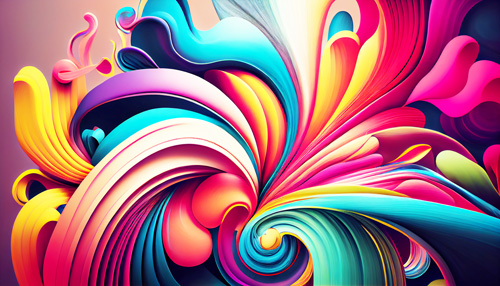In the kaleidoscopic universe of entertainment, graphic design emerges as the unsung hero, seamlessly weaving the threads that bring stories to life on screens both big and small. From the pulsating energy of concert posters to the immersive worlds of video games, graphic design is the silent orchestrator, setting the stage for unforgettable experiences.
🎬 The Cinematic Canvas: Movie Posters and Beyond
In the world of film and television, graphic design is the herald that announces the arrival of a visual spectacle. Movie posters, in particular, are the initial brushstrokes on the canvas of anticipation. A skilled graphic designer distills the essence of a storyline into a single image, conveying the mood, genre, and allure of the cinematic creation. The iconic nature of movie posters, from the surrealism of Saul Bass to the modern minimalism of today, underscores the enduring power of graphic design in shaping our cinematic expectations.
Beyond posters, opening credits sequences serve as a dynamic playground for graphic designers. These sequences, often a visual prelude to the narrative, are an art form in their own right. From the sleek, stylized credits of James Bond films to the animated brilliance of "Stranger Things," graphic design becomes a storytelling device, immersing the audience before a single line of dialogue is spoken.
🎮 Interactive Aesthetics: Graphic Design in Video Games
Video games represent an interactive symphony where graphic design plays a multifaceted role. Beyond the game itself, promotional materials, box art, and in-game interfaces all fall under the purview of graphic designers. The challenge is not only to capture the essence of the game but also to create an immersive experience that transcends the screen.
Character design, environment rendering, and user interface elements are meticulously crafted to enhance the player's journey. Each visual element serves a dual purpose – aesthetic appeal and functional utility. Whether navigating a dystopian future or exploring a fantastical realm, the graphic designer's touch guides players through a visually captivating adventure.
🎤 Harmony in Concert: Graphic Design for Music
In the realm of music and live performances, graphic design becomes a rhythmic dance of visuals that echoes the beats and melodies of the accompanying sounds. Concert posters, album covers, and stage visuals are the graphic designer's canvas for translating auditory experiences into visual spectacles.
Consider the psychedelic swirls of the 1960s concert posters or the bold, typographic statements of punk rock album covers. Graphic design in the music industry not only captures the spirit of a musical movement but becomes an integral part of the cultural zeitgeist. In the digital age, social media banners, lyric videos, and immersive websites further extend the reach of graphic design in the promotion and dissemination of musical content.
📺 From Screens to Streaming: Graphic Design in Television
With the advent of streaming platforms, graphic design's role in television has expanded into a dynamic realm of thumbnails, promotional banners, and user interfaces. The challenge lies in distilling the essence of a show into a single, eye-catching thumbnail that beckons viewers to explore. Consistent visual branding across streaming platforms becomes a visual shorthand for a show's identity.
Moreover, title sequences have evolved into a narrative art form in themselves, with graphic designers pushing the boundaries of creativity. The iconic opening sequence of "Stranger Things" and the intricate clockwork of "Westworld" exemplify how graphic design becomes an integral part of the storytelling process, setting the tone for the episodes that follow.
In the ceaseless evolution of the entertainment industry, a graphic designer stands as a dynamic force, shaping narratives and experiences across diverse mediums. It is not merely an embellishment but an indispensable language that communicates, captivates, and elevates the entertainment journey to new heights. Whether in the flickering lights of a movie theater, the interactive realms of video games, the pulsating beats of a concert, or the streaming landscapes of television, graphic design is the silent maestro conducting the visual symphony of our entertainment experiences.






